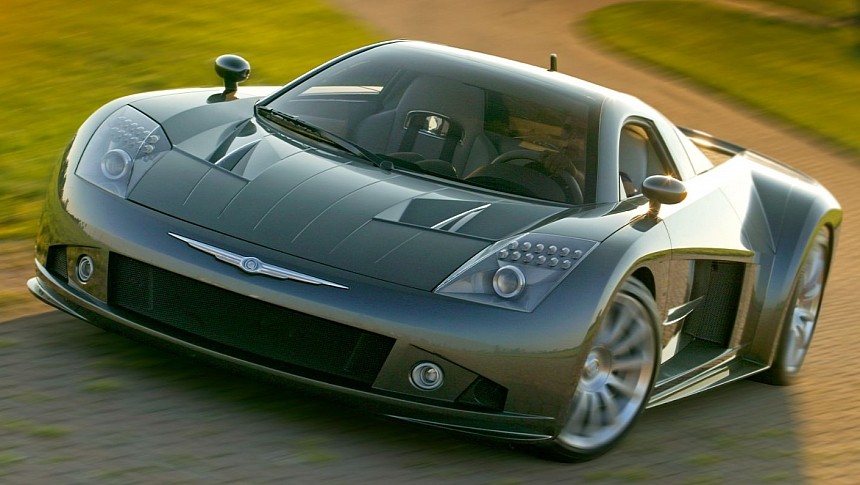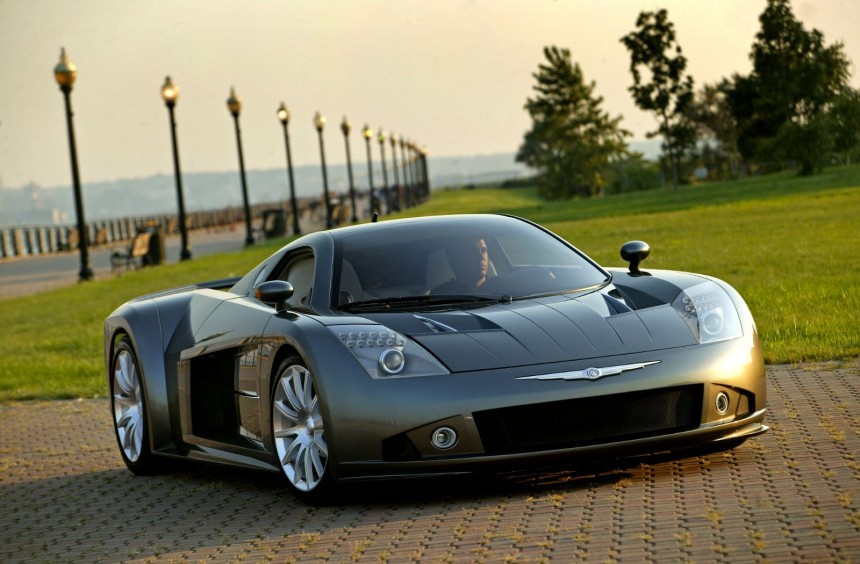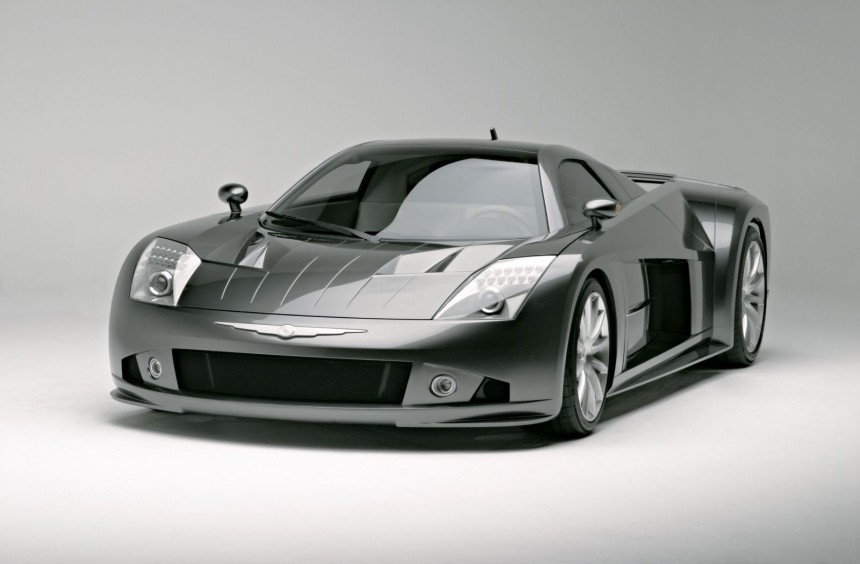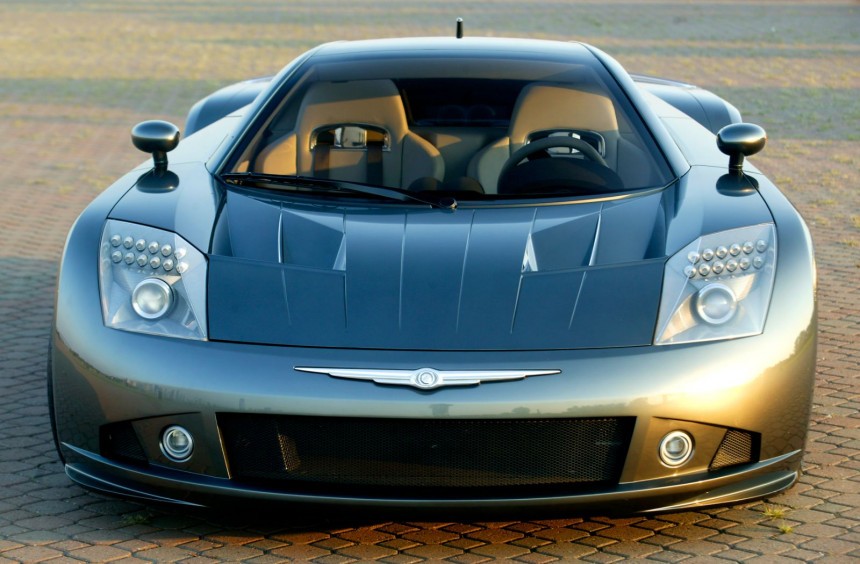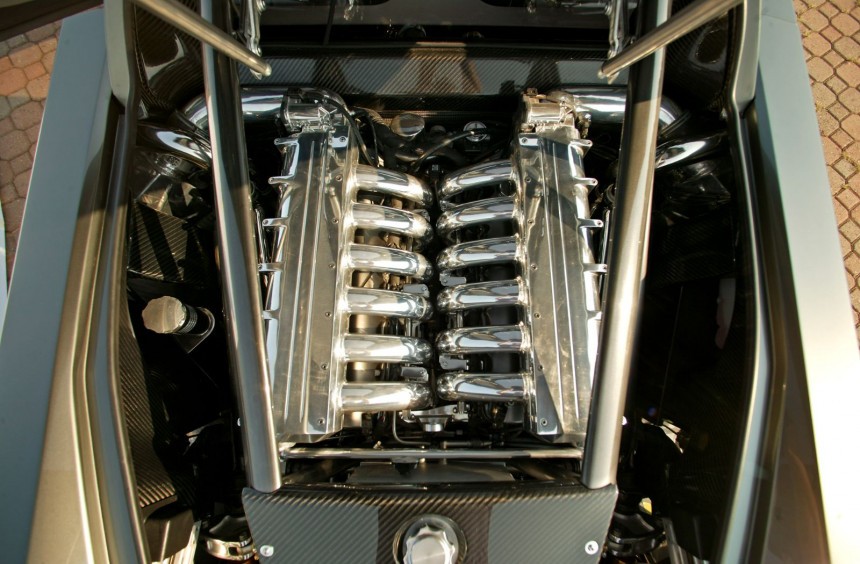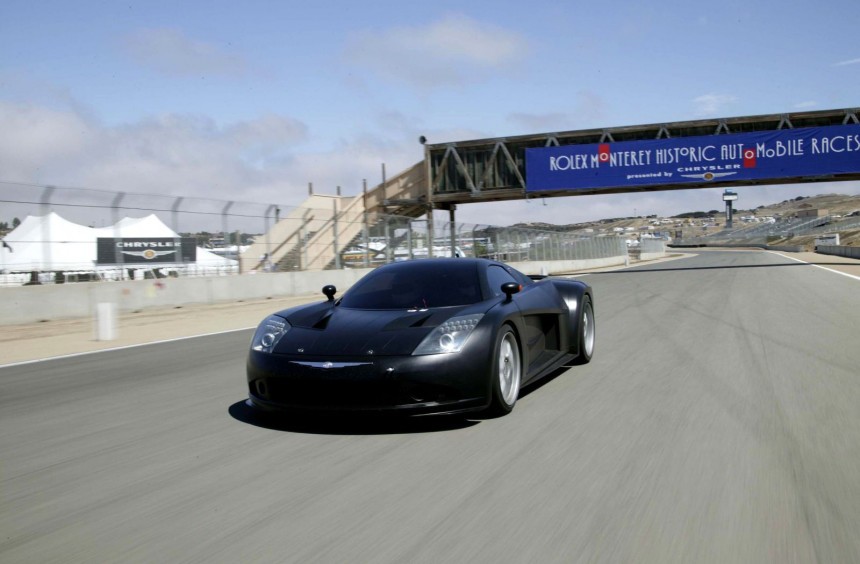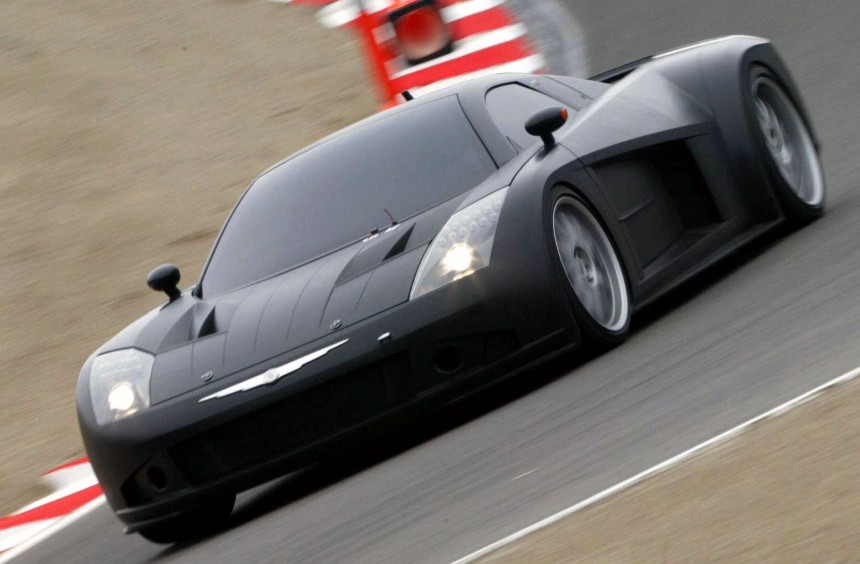Unfortunately, it was just a concept that never made it into production. But, despite that, it's still the most outrageous supercar Chrysler has ever produced.
As a corporation and not solely as a brand, Chrysler has been responsible for some of the most breathtaking supercars in the US during the 1960s and 1970s.
Of course, I'm talking about models like the Dodge Charger, Dodge Challenger, Plymouth Barracuda, Roadrunner, and Superbee. Now known as muscle cars, they were once dubbed supercars by American enthusiasts.
As for the term's current meaning, attributed to exotic high-performance sports cars, the Chrysler Corporation only mass-produced one: the mighty Dodge Viper.
The V10-powered monster made its public debut at the Indianapolis 500 in 1991, then continued to thrill gearheads all over the world for the next sixteen years.
But Chrysler's quest to get its slice of the supercar pie didn't end with the Viper. A few years after merging with Daimler-Benz AG, a secret project involving the newly-formed entity's best engineers gave birth to the most impressive car to don Chrysler badges.
Despite the highly-publicized merger, Chrysler and its divisions weren't doing too well in terms of sales. To change that, the American branch of Daimler-Benz AG convinced their partners in Germany that building a new high-performance sports car was just what they needed to reignite public interest.
However, the new car wouldn't be an average high-performance sport but an outrageously fast and powerful supercar that was set to follow in the footsteps of the Viper V10-powered Dodge Tomahawk franken-bike.
Surprisingly, the Germans agreed and even offered to lend a hand, so in early-2003, the exquisite four-wheel monster dubbed ME Four-Twelve began taking shape.
Since it was meant to be a concept that would draw attention to the Chrysler brand - and gauge the interest of the obscenely wealthy in the process -the ME Four-Twelve needed to be eye-catching.
Brian Nielander, the stylist responsible for several innovative Chrysler concepts, was deemed the right man for the job.
Constructed almost entirely out of carbon fiber, the car's body featured a beautiful blend of ample curves and straight, aggressive lines. It was stunning from every angle, perfectly accomplishing the goal of being awe-inspiring.
The same formula was used to design the retro-modern interior, which oozed elegance thanks to the mix of high-quality fabrics and chromed metal trims.
Besides being visually appealing, the ME Four-Twelve was designed to encompass the latest manufacturing techniques and technologies.
It was built around a carbon-fiber honeycomb monocoque mated to a chromoly steel rear subframe which maximized rigidity. The structure also used aluminum crumple zones that complied with US federal safety regulations.
The Formula 1-style pushrod suspension system with double wishbones and aluminum control arms featured horizontally-opposed and electronically controlled Öhlins dampers.
For the brakes, the engineering team chose to go with massive six-piston aluminum monoblock calipers that hugged equally huge 15.0-inch (381 mm) carbon ceramic discs that were not only a lot more efficient thanks to their higher friction coefficient but also 65 percent lighter than conventional iron discs.
The design and engineering teams also put much effort into making the supercar as aerodynamically efficient as possible. The exquisite body's drag coefficient of only 0.358 was backed up by several aero features like an active rear spoiler or a motorsport-derived underbody with an integrated front splitter and rear diffuser.
At the heart of this beast was a unique, mid-mounted version of the Mercedes M120 V12.
Developed by AMG and closely related to the M120's larger, more rabid M297 sibling that powered the likes of the Pagani Zonda or the Mercedes-Benz CLK GTR Strassenversion, the 6.0-liter received forged internals, custom cylinder heads, an improved cooling system, new manifolds, electronic sequential multipoint fuel injection, and a quad-turbo forced induction system.
Linked to a seven-speed Ricardo dual-clutch gearbox built specifically for the ME Four-Twelve, the engine was rated at 850 bhp at 5750 rpm, delivering a whopping 850 lb-ft (1150 Nm) of torque to the rear wheels between 2500 and 4500 rpm.
Since the vehicle's curb weight tipped the scales at just 2,880 pounds (1,310 kg), the power-to-weight ratio attained was 3.4 lbs/hp. Combined with the 142 hp/liter of the engine itself, the ME Four-Twelve was set to be in a league of its own in terms of power.
Performance-wise, Chrysler's supercar was just as impressive. Initial computer simulations estimated that it could sprint to 60 mph (97 kph) in 2.9 seconds and run the quarter mile in 10.6 seconds at 142 mph (228 kph). Furthermore, it could theoretically achieve a top speed of 248 mph (400 kph).
Finished in just a few months, the ME Four-Twelve was unveiled to the public in January 2004 at the North American International Auto held in Detroit.
As you would expect, the public and the automotive press were in awe of the supercar and its spec sheet, but there was a catch. The car was partially functional, and the figures were purely theoretical. Nevertheless, Chrysler promised that it would back those figures up in the near future.
To do that, a second, fully-engineered ME Four-Twelve was built. The car was handed over to Dan Knott and his Street & Racing Technology (SRT) team for fine-tuning and testing. As promised, the car took to the track just a few months later, showcasing its cat-like agility, tremendous power, and lightning-fast acceleration. The only figure that wasn't put to the test was its top speed.
Considering all the effort that was put into demonstrating its potential and making it compliant with federal regulations, it's a no-brainer that Chrysler planned a limited production run.
However, the Daimler-Chrysler merger was already beginning to look like a bad idea from a German perspective. The Stuttgart-based decision-makers were growing increasingly dissatisfied with Chrysler's disastrous products, so to minimize losses, they agreed to pull the plug on the project before it entered production.
Had it made it onto the public roads, the ME Four-Twelve would have mopped the floor with all other early-2000s supercars and battled for supremacy with the Bugatti Veyron.
Despite only being a concept many seem to have forgotten, the Four-Twelve is still Chrysler's most impressive supercar and will remain one of the biggest automotive "what ifs?" of the 21st century.
For more on this fantastic ride, we recommend the YouTube video below by Marspeed.
Of course, I'm talking about models like the Dodge Charger, Dodge Challenger, Plymouth Barracuda, Roadrunner, and Superbee. Now known as muscle cars, they were once dubbed supercars by American enthusiasts.
As for the term's current meaning, attributed to exotic high-performance sports cars, the Chrysler Corporation only mass-produced one: the mighty Dodge Viper.
The V10-powered monster made its public debut at the Indianapolis 500 in 1991, then continued to thrill gearheads all over the world for the next sixteen years.
But Chrysler's quest to get its slice of the supercar pie didn't end with the Viper. A few years after merging with Daimler-Benz AG, a secret project involving the newly-formed entity's best engineers gave birth to the most impressive car to don Chrysler badges.
The idea behind the project
However, the new car wouldn't be an average high-performance sport but an outrageously fast and powerful supercar that was set to follow in the footsteps of the Viper V10-powered Dodge Tomahawk franken-bike.
Surprisingly, the Germans agreed and even offered to lend a hand, so in early-2003, the exquisite four-wheel monster dubbed ME Four-Twelve began taking shape.
A bold design statement
Brian Nielander, the stylist responsible for several innovative Chrysler concepts, was deemed the right man for the job.
Constructed almost entirely out of carbon fiber, the car's body featured a beautiful blend of ample curves and straight, aggressive lines. It was stunning from every angle, perfectly accomplishing the goal of being awe-inspiring.
The same formula was used to design the retro-modern interior, which oozed elegance thanks to the mix of high-quality fabrics and chromed metal trims.
An engineering masterclass
It was built around a carbon-fiber honeycomb monocoque mated to a chromoly steel rear subframe which maximized rigidity. The structure also used aluminum crumple zones that complied with US federal safety regulations.
The Formula 1-style pushrod suspension system with double wishbones and aluminum control arms featured horizontally-opposed and electronically controlled Öhlins dampers.
For the brakes, the engineering team chose to go with massive six-piston aluminum monoblock calipers that hugged equally huge 15.0-inch (381 mm) carbon ceramic discs that were not only a lot more efficient thanks to their higher friction coefficient but also 65 percent lighter than conventional iron discs.
The design and engineering teams also put much effort into making the supercar as aerodynamically efficient as possible. The exquisite body's drag coefficient of only 0.358 was backed up by several aero features like an active rear spoiler or a motorsport-derived underbody with an integrated front splitter and rear diffuser.
A bespoke engine with twelve cylinders and four turbos
Developed by AMG and closely related to the M120's larger, more rabid M297 sibling that powered the likes of the Pagani Zonda or the Mercedes-Benz CLK GTR Strassenversion, the 6.0-liter received forged internals, custom cylinder heads, an improved cooling system, new manifolds, electronic sequential multipoint fuel injection, and a quad-turbo forced induction system.
Linked to a seven-speed Ricardo dual-clutch gearbox built specifically for the ME Four-Twelve, the engine was rated at 850 bhp at 5750 rpm, delivering a whopping 850 lb-ft (1150 Nm) of torque to the rear wheels between 2500 and 4500 rpm.
Since the vehicle's curb weight tipped the scales at just 2,880 pounds (1,310 kg), the power-to-weight ratio attained was 3.4 lbs/hp. Combined with the 142 hp/liter of the engine itself, the ME Four-Twelve was set to be in a league of its own in terms of power.
Performance-wise, Chrysler's supercar was just as impressive. Initial computer simulations estimated that it could sprint to 60 mph (97 kph) in 2.9 seconds and run the quarter mile in 10.6 seconds at 142 mph (228 kph). Furthermore, it could theoretically achieve a top speed of 248 mph (400 kph).
Backing those figures up on the track
As you would expect, the public and the automotive press were in awe of the supercar and its spec sheet, but there was a catch. The car was partially functional, and the figures were purely theoretical. Nevertheless, Chrysler promised that it would back those figures up in the near future.
To do that, a second, fully-engineered ME Four-Twelve was built. The car was handed over to Dan Knott and his Street & Racing Technology (SRT) team for fine-tuning and testing. As promised, the car took to the track just a few months later, showcasing its cat-like agility, tremendous power, and lightning-fast acceleration. The only figure that wasn't put to the test was its top speed.
Considering all the effort that was put into demonstrating its potential and making it compliant with federal regulations, it's a no-brainer that Chrysler planned a limited production run.
Had it made it onto the public roads, the ME Four-Twelve would have mopped the floor with all other early-2000s supercars and battled for supremacy with the Bugatti Veyron.
Despite only being a concept many seem to have forgotten, the Four-Twelve is still Chrysler's most impressive supercar and will remain one of the biggest automotive "what ifs?" of the 21st century.
For more on this fantastic ride, we recommend the YouTube video below by Marspeed.
